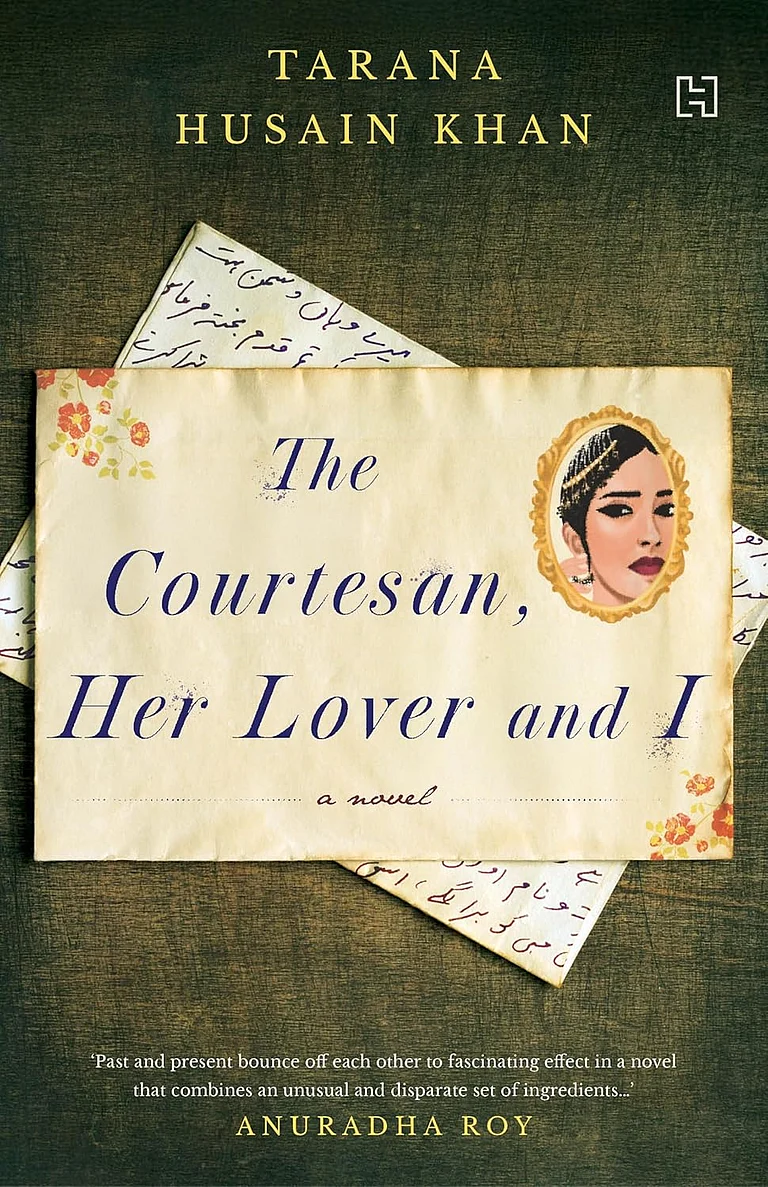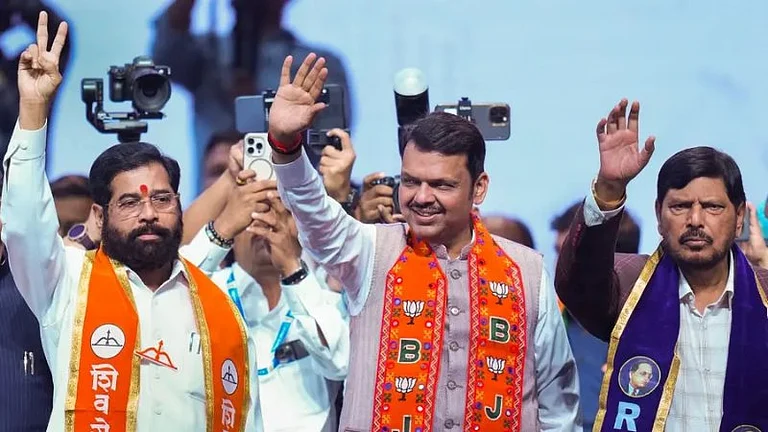Hindu legends speak of a time when a marital tiff between Lord Shiva and Parvati led to famines and drought across the universe. After Shiva beat Parvati in a game of dice by cheating with the help of Vishnu, Parvati called the game an ‘illusion’. Left defenceless, Shiva said that everything in the world was an illusion, including food. To make her husband learn the price of his levity, Parvati - the goddess of fertility and nourishment - walked off the Earth, causing famine and drought. Thus, the goddess of food - Annapurna - was born to save the world from strife and Shiva had to ultimately set aside his pride and accept rice from Annapurna. The legend has been captured by several Indian artists like Raja Ravi Varma and Nandalal Bose among others. Some of its earliest depictions date back to the 19th century. These artworks not only keep the tale alive but also serve as didactic reminders of the fallacy of pride and the dangers of neglecting the Earth that provides us food for survival.

The legend and its subsequent depictions in the art are an interesting example of how food has been used as a motif in both religious and cultural discourse in India. Through the metaphor of food, the legend didactically teaches the importance of respecting women for the survival of the world. But it also relegates her to the kitchen. The legend also refers to famines and droughts that are endemic to the Indian subcontinent for millennia. Ages since the story was first told, the truths that perhaps inspired the myth to remain true to this day.
Food as Art
In the 35,000-year-long history of art from the Palaeolithic era to the digital age, food has always been a major theme across the world due to its universal and unavoidable nature. Be it the medieval frescoes of loaded food tables critiquing depicting gluttony of the rich or the can of ‘Campbell soup’ immortalised by the American artist Andy Warhol as an indicting symbol of American consumerism, food has always played a pivotal role as a medium of allegory and political commentary. Kara Walker’s monumental ‘Sugar Baby’ sculpture made of sugar and molasses was a commentary on the imperialistic culture of employment by juxtaposing the current work culture with the slave trade in which slaves were traded for sugar. Korean artist Nanda also juxtaposed traditional Korean culture with the global Coffee chain ‘Coffee Bean’ to reflect economic imperialism in the marketplace and its impact on traditional values.
Perhaps due to the innate humanness of the act of cooking and eating which is central to survival, both food and its preparation and consumption find ample representation in art through the ages. One of the most popular paintings of all time is a painting of the last supper eaten by Jesus Christ and his disciples before he was betrayed and ultimately crucified. The eating of the forbidden apple became the ‘original sin’, depictions of which have become synonymous with Christian values with thousands of interactions in visual history and pop culture. From class distinction to critiques of political systems, the everydayness and universality of food make it an apt medium for artists to explore multiple shades of the human condition.

In India, the exploration of food as a medium of the artist dates back to the Bimbedka rock paintings of the Palaeolithic era that depict scenes of hunting and gathering and items of the food they found in forests, giving a distinct look into the life of the earliest people to have inhabited the territory that is today India. Be it the terracotta figurine from era 184-75 BCE depicting a picnic party including a lush 'thaal’ of culinary preparations like rice balls discovered in Kaushambi, Uttar Pradesh to the medieval era temple art depicting the pastoral life of Lord Krishna stealing butter among others, all form part of India’s culinary imagination. An 1850 'Company painting' by Shiva Dayal Lal depicts four women selling grains and vegetables in Patna. Paintings commissioned by the British showed Indians living rich and comfortable lives with adequate food, often to hide the famine and drought-like conditions of their colonies. Similarly, food showed up in Mughal-era paintings such as a circa 1600 gouache court album painting depicting Emperor Jahangir meeting his two sons who greeted him with food.
Politics of food
While western classical themes around food have traditionally centred around the depiction of a certain class and religious morality, food in India is a marker of identity. With several identities like class, caste, gender, religion and regional culture competing for space in the ‘culinary imagination’ of India, artists are writers have often interpreted food across mediums to express themes of discrimination, oppression, social structuring and rebellion of the times.
In the modernist works of Amrita Shergill, the preparation of food as a mundane yet indelible part of daily life brings out the meditative role it plays in forming cultures and delves into more complex themes of toxic gender roles at a time when feminist literature and art was still at a nascent stage in India. Along with the depiction of food and cooking, the absence of food has also been a major theme to express the deep-seated inequalities of Indian society. The juxtaposition of bowls filled with fish bottles of wine on a table inside a house and the empty food bowls of a family sitting outside in FN Souza’s 1979 artwork ‘Indian Family’ is a stirring example of how the symbolism of food. Later modern artists like Subodh Gupta took the art of food beyond the artists’ studio and into a kitchen. At the 2017 Art Basel, Gupta served a seven-course meal to people in batches of 20 four times a day for a week. The spread consisted of authentic Indian food with a special focus on Bihari cuisine. The idea was to capture the performative act of eating food which brought people across cultures together. The artwork came at a time when food was causing lynchings and communal violence in several parts of India.
Through food, artists like Vibha Galhotra are trying to highlight issues of global warming and food scarcity. With a focus on rivers, the artist for the past four years has been mapping the trajectory of rivers under a project called ‘Who Owns The Water’ to trace the way it impacts food around it amid changes in the political climate of the land it passes through. In Israel at present, Galhotra has been following the inter-border journey of the river Jordan to capture the socio-political realities of changing landscape of the river.

Food (in)security
The covid-19 lockdown in 2020 saw a major food crisis in India. Amid the migrant exodus, food became scarce and many survived on biscuits and water. The absence of food in real life was interpreted by artists like Gupta who created ‘Langar’ in 2021, a sculpture inspired by the aid given by the Sikh community for feeding thousands of migrants and the marginalised during the crisis. Artists like PS Jalaja's 2020 watercolour depicting farmers with loudspeakers brought out the farmers’ agitations and showed another aspect of food that has often featured heavily in Indian artworks. Unlike the romanticisation of idyllic farm life, the sketches and art of Nandalal Bose, Chittaprosad Bhattacharya, miniaturist KK Hebbar for instance, brought out the angst of hunger, malnourishment and structural inequality that is rooted in Indian society and questioned the oppressive states accountable for perpetuating the distress of ordinary humans.
Others like Delhi-based Sujoy Roy are interpreting the relationship of humans with nature as an essential precondition for food security. In ‘The Earthen Touch’, part of his series of acrylic on canvas paintings recently exhibited in Delhi, takes a meditative gaze on humans losing touch with the planet and the trees that feed them. In the painting, instead of fruits, the tree only bears questioning fingers pointing outward.

The 2020 pandemic and the increasing turn toward digital modes of content consumption has also bred a new kind of burgeoning food-inspired art that revels in excess. Miniature ‘food art’, artworks made using food materials (like Instagram-famous Chef Jiten’s viral carved watermelon in support of peace in Ukraine), videos of food waste, murals using woodgrains, and hyperrealistic cakes have all become part of the larger oeuvre of art inspired by food.
Perhaps the reason why food remains such a consistently revisited topic by artists across mediums is its ability to tell stories. While food forms the base of Maslow’s pyramid of needs, it has also been known to have a meditative, almost spiritual effect on people. And since art reflects real life, depictions of what’s on one’s plate in art, deliberate or accidental, become more than just artworks but storytellers and documentarians, giving many a glimpse into the lives and hardships of those who are often lost in the statistics.


























